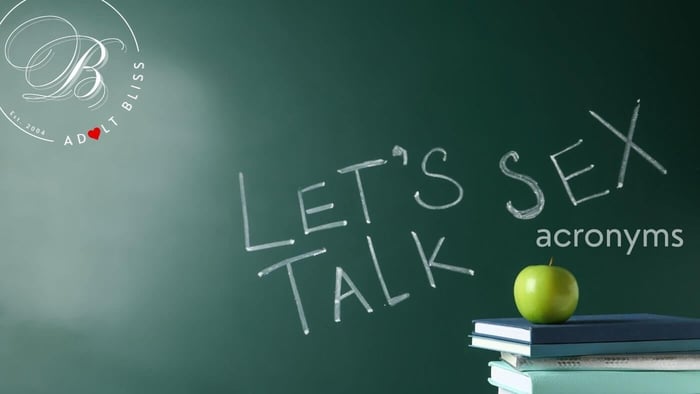
What Is My Love Language? Or Does It Really Exist?
Jump To Section
Intro to Love Languages
The concept of love languages has become all the rage in pop psychology and pop culture. People have enthusiastically worked on identifying their love language and that of their partner, in the hope of using this to strengthen and develop their relationships. But what is behind this concept taking intimate relationships by storm? Is there any scientific evidence to support it? And is it at all useful for evaluating how we build and maintain relationships? Read on as we dive into this highly popular (and slightly controversial) topic.

The History
The concept of love languages was conceived by a Baptist minister, Dr Gary Chapman, and detailed in his 1992 book “The Five Love Languages.” The book was published by a Christian publication company, and Dr Chapman’s Ph.D qualification is from Southwestern Baptist Theological Seminary in adult education. Love languages, as described in Dr Chapman’s book, are targeted towards Christian heterosexual marriages, which he sees as the ideal relationship. The love languages concept in its original form, is an oversimplified, snappy way of diagnosing marital issues. In the book, it leans heavily on scripture, while sidestepping the gendered dynamics and issues present in heterosexual relationships.
Dr Chapman relies on anecdotes from his Christian counselling background to support his concept, suggesting that to discover another person’s "language", we must observe the way they express love to others, explore what they complain about most often and the things they request from their intimate partner most often. His theory is that people naturally give love in the way that they wish to receive it, and communication between partners is improved when caring is demonstrated through the "language" that the person understands.
 “The Five Love Languages” was a commercial success, spending 297 weeks on the New York Times Best Seller List since 2013. Dr Chapman followed this up with further related books, including “The Five Love Languages of Children”, “The Five Love Languages for Singles” and co-authoring “The 5 Languages of Appreciation in the Workplace” with Dr Paul White. The concept has proved popular outside of Christian circles, with it becoming cemented in pop psychology and pop culture.
“The Five Love Languages” was a commercial success, spending 297 weeks on the New York Times Best Seller List since 2013. Dr Chapman followed this up with further related books, including “The Five Love Languages of Children”, “The Five Love Languages for Singles” and co-authoring “The 5 Languages of Appreciation in the Workplace” with Dr Paul White. The concept has proved popular outside of Christian circles, with it becoming cemented in pop psychology and pop culture.
Womanizer Enhance

$259.95
EnhanceOrgasms for all What is it?Womanizer‘s first clitoral stimulator, combining We-Vibe vibrations with Pleasure Air Technology for an enhanced sensation. Seperate motors allow you to...… read more
What Does Psychological Science Have to Say?
According to Chapman’s concept of love languages, people are more satisfied in their relationship if their primary "language" matches that of their partner, and are consequently less satisfied when they do not match. Additionally, when viewed through the "language" lens, he argues that relationships are more likely to result in greater satisfaction when a person can identify their partners "language" and act in ways that speak that "language". For example, one of the languages is “words of affirmation”, so by using kind, encouraging and positive words, expressing gratitude and appreciation, and avoiding criticism, unkind comments, this expresses love to the person for whom this is their primary "language".

Flawed research
Despite the concept’s popularity, there has been little research conducted and reported on over the past 30 years. While most of the research is inconclusive, it tips more towards refuting love languages The first issue concerns a conceptual problem with the theory that Dr Chapman has developed, and a key part of any psychological research. To withstand the rigours of research and investigation, when a theory such as love languages is developed, it not only has to be comprehensively defined, but also must have a clear and unambiguous method for assessing and cataloguing it’s different components, in this case the "languages" themselves.
there is no difference between the individual "languages" as they are all significantly connected to each otherThe quiz that Dr Chapman provides to establish a person’s primary "language" is flawed, in that it forces them to choose between expressions of love which are most meaningful to them, eg holding hands OR receiving gifts. In Dr Chapman’s theory, holding hands and receiving gifts are two different types of "languages", but the quiz requires a forced choice, which is not indicative of choices we make in real life. Instead, people say that all of the things described by the "languages" are meaningful. Despite millions of completed surveys reported by 5lovelanguages.com, no results have been published, calling into question the validity and reliability of the quiz. Researchers who have analysed the validity of the quiz have found significant relationships between the factors of all five "languages"; in short, this means that there is no difference between the individual "languages" as they are all significantly connected to each other.
Researchers refute the theory
Furthermore, Dr Chapman says that his concept explains relationship satisfaction over two factors; couples with matching "languages" experience greater satisfaction than those that do not and better understanding of your partner’s "language" is linked to higher relationship satisfaction. Although there are very limited studies on these premises, they have returned mixed results by psychological researchers. Three studies which tested the premise that matching "languages" leads to greater relationship satisfaction found that those with matching love languages were no more satisfied than those who did not match. Only two studies have looked at the premise which argues that knowing your partner's "language" leads to greater relationship satisfaction. Both of these studies found that knowledge of a partners “language” did predict present and future relationship satisfaction. However, due to the issues with conception and assessment of these "languages" and the fact that the studies are limited, these results need to be viewed conservatively.
there are very limited studies on these premises, they have returned mixed results A Reductive Framework
So, what can we take (if anything) from the concept of these "languages"? Although the research is inconclusive or refutes the theory developed by Dr Chapman, we can conclude that reflecting on how we like to receive love and care in our relationships, and being perceptive to the needs of those we are intimate with does appear to influence relationship satisfaction. For example, a study that focussed on heterosexual couples found that men who reported greater empathy and perspective taking had a "language" better matched to that of their partner. So perhaps being aware and tuned into your partner and how they prefer to give and receive love is an important facet of relationship satisfaction, and pre-dates Dr. Chapman's theory.

The truth is that lay-people have embraced the "languages" concept as it provides a natural metaphor that is easily relatable for many people. But this does not mean that it provides an accurate reflection of human emotions. It is a reductive conception of a complex organism that is human relationships and intimacy. “If your partner’s love language is x, then do a, b, and c and avoid doing q, r, s, and you will have a satisfying relationship.” How people express and receive love is only one portion of the intricacy of developing and maintaining relationships with others.
FAQs
Is it a religious theory?
Dr. Gary Chapman introduced the idea in his 1992 book 'The Five Love Languages', which was rooted in Christian theology and aimed at heterosexual marriages. Despite its narrow focus, Chapman's book became a massive bestseller and led to a range of spin-offs, gaining traction in mainstream media.
Is it Pop Culture or Pop Psychology?
The concept of love languages has become highly influential in pop culture and pop psychology, with many using in hopes of improving their romantic relationships. Love languages are not considered to be research supported psychological advice.
What is wrong with the theory?
In short, the framework is overly simplistic. The model simplifies relationship dynamics into five distinct, overlapping "languages" and uses anecdotal evidence rather than scientific evidence to support its claims.
What does science say?
There is limited empirical research supporting the theory. Most findings either refute Dr. Chapman's concept, or are inconclusive about its effectiveness for improving relationships. The quiz used to identify love languages is methodologically weak, forcing binary choices that don't reflect the complexity of real-life decisions to provide valid data.
Does it teach us anything?
The theory holds that couples are happiest when their love language matches, and that understanding each other's love language increases satisfaction. The concept is appealing as a relatable metaphor but is ultimately reductive as it oversimplifies the nuanced, evolving nature of human intimacy and emotional expression.








